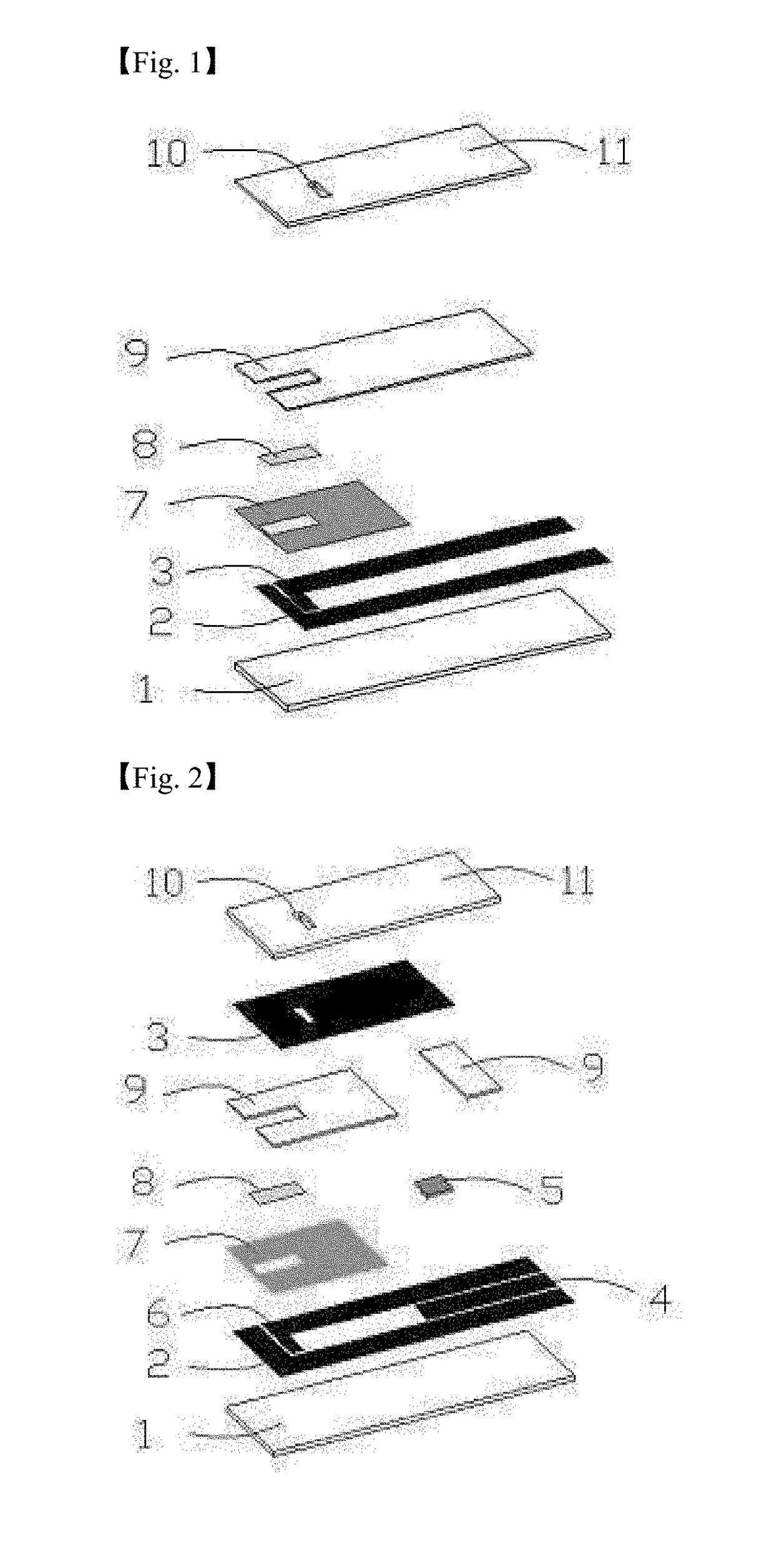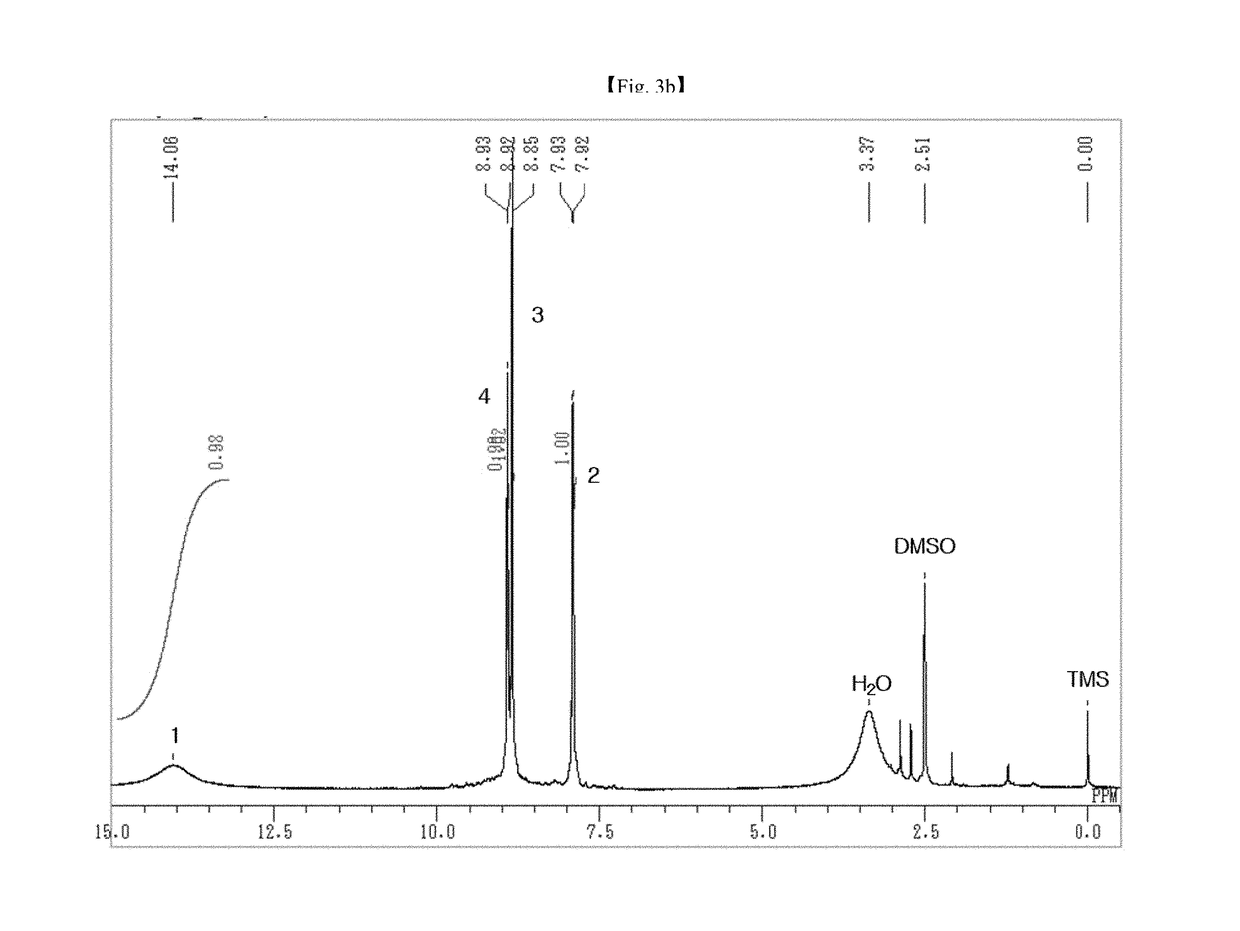Electrochemical biosensor
a biosensor and electrochemical technology, applied in the field of electrochemical biosensors, can solve the problems of easy deterioration, inability to accurately detect glucose at a low concentration, severe measurement errors, etc., and achieve the effect of stable oxidation-reduction form
- Summary
- Abstract
- Description
- Claims
- Application Information
AI Technical Summary
Benefits of technology
Problems solved by technology
Method used
Image
Examples
example 1
on of Osmium Complex
[0095]1-1. Synthesis of Osmium Complex 4,4′-Dicarboxy-2,2′-Bipyridine (Dcbpy) and K2OsCl6 were Used as Starting Materials to Synthesize Os(Dcbpy)2Cl2 (Osmium Complex).
[0096]K2OsCl6 0.481 g (1 mM) and dcbpy 0.488 g (2 mM) were poured into a 500 mL three-neck round-bottom flask, and dissolved with agitation for 1 hour by addition of dimethylformamide (DMF) 40 mL. Then, the mixture was incubated in an oil bath at 180° C. for 2 hours in an atmosphere of N2 with reflux. After the solution was completely reacted, the solvent was removed using a rotary evaporator, the product was filtered under reduced pressure while washing with distilled water. The filtered product was dried at 50° C. for 12 hours, to produce Os(dcbpy)2Cl2 (osmium complex) at a yield of 60 / %.
1-2. Spectroscopic Characterization:
[0097]To test the successful synthesis of Os(dcbpy)2Cl2 (osmium complex) by using dcbpy and K2OsCl6, 1H NMR (400 MHz, DMSO-d6) of the product was measured. 1H NMR spectrum of dc...
example 2
on of a Salt of Osmium Complex
[0101]The structure of the synthesized osmium complex is an organometallic compound where a dcbpy ligand having a by pyridine structure with a carboxy group (COOH) is coordinated to osmium (Os) as a central metal, and has low solubility in water. The solubility was increased by converting the —COOH group of the osmium complex to the salt form by substituting with —COO—Na+. First, the equivalence ratio was determined by titration to convert to the salt form, and the proper equivalence ratio was 1:3. In subsequent examples, an osmium complex sodium salt was used by substituting the osmium complex with NaOH at 1:3 equivalent ratios.
example 3
Treatment of Osmium Complex
[0102]In this example, 0.75 g (1 mM) of the synthesized osmium complex was poured to 500 mL one-neck round-bottom flask and was dissolved in 100 mL of distilled water. After 0.037 g / 0.034 g (1 mM) of oxidizing agent (NaOCl / H2O2) was added, the reaction was carried out for 2 hours with agitation. After the reaction was completed, the solvent was removed using a rotary evaporator, and the product was filtered under reduced pressure while washing with ethyl ether. The filtered product was dried at 50° C. for 12 hours or more to obtain 90% osmium complex (oxidation state, Os(ox) complex).
PUM
| Property | Measurement | Unit |
|---|---|---|
| molar ratio | aaaaa | aaaaa |
| molar ratios | aaaaa | aaaaa |
| molar ratio | aaaaa | aaaaa |
Abstract
Description
Claims
Application Information
 Login to View More
Login to View More - R&D
- Intellectual Property
- Life Sciences
- Materials
- Tech Scout
- Unparalleled Data Quality
- Higher Quality Content
- 60% Fewer Hallucinations
Browse by: Latest US Patents, China's latest patents, Technical Efficacy Thesaurus, Application Domain, Technology Topic, Popular Technical Reports.
© 2025 PatSnap. All rights reserved.Legal|Privacy policy|Modern Slavery Act Transparency Statement|Sitemap|About US| Contact US: help@patsnap.com



